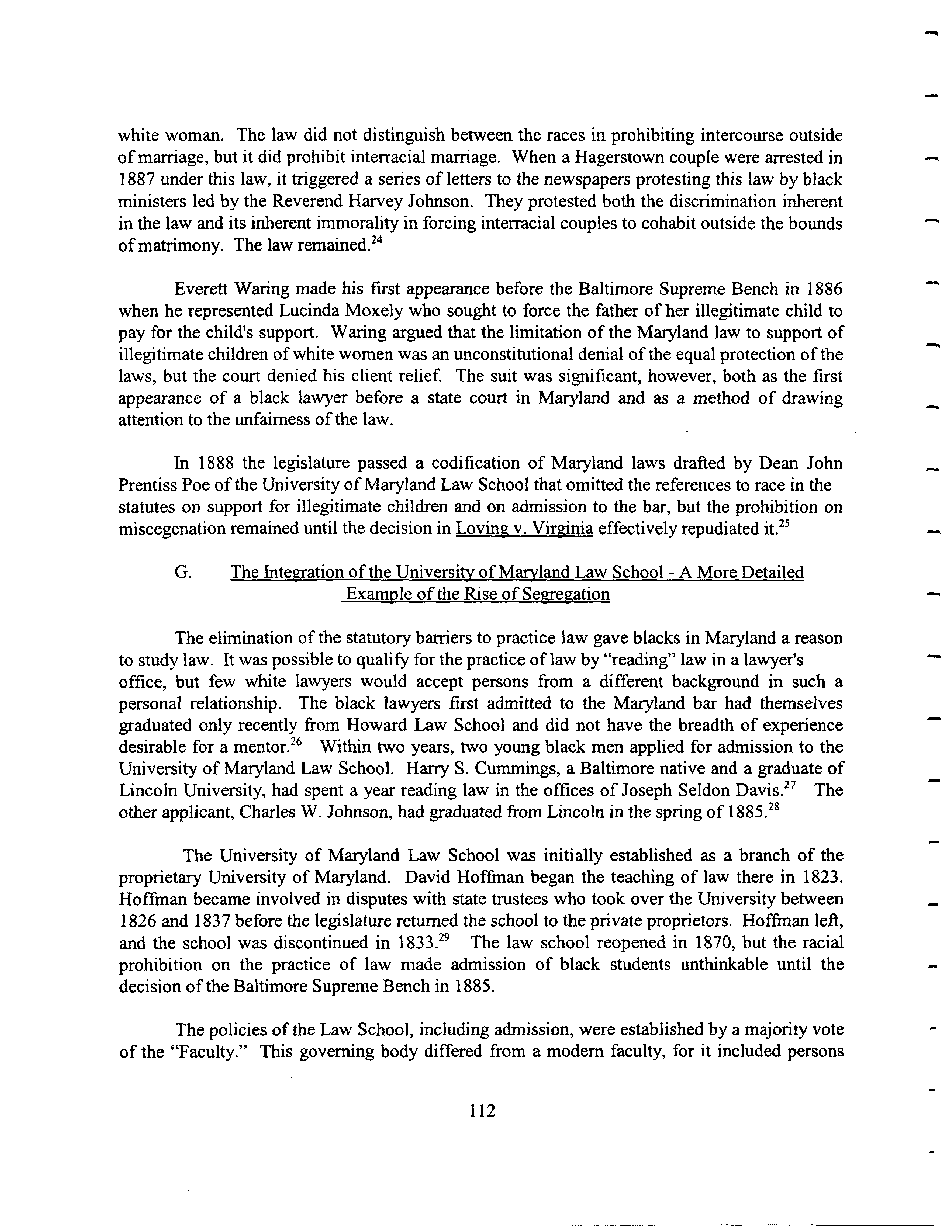|
white woman. The law did not distinguish between the races in prohibiting intercourse outside
of marriage, but it did prohibit interracial marriage. When a Hagerstown couple were arrested in
1887 under this law, it triggered a series of letters to the newspapers protesting this law by black
ministers led by the Reverend Harvey Johnson. They protested both the discrimination inherent
in the law and its inherent immorality in forcing interracial couples to cohabit outside the bounds
of matrimony. The law remained.24
Everett Waring made his first appearance before the Baltimore Supreme Bench in 1886
when he represented Lucinda Moxely who sought to force the father of her illegitimate child to
pay for the child's support. Waring argued that the limitation of the Maryland law to support of
illegitimate children of white women was an unconstitutional denial of the equal protection of the
laws, but the court denied his client relief. The suit was significant, however, both as the first
appearance of a black lawyer before a state court in Maryland and as a method of drawing
attention to the unfairness of the law.
In 1888 the legislature passed a codification of Maryland laws drafted by Dean John
Prentiss Poe of the University of Maryland Law School that omitted the references to race in the
statutes on support for illegitimate children and on admission to the bar, but the prohibition on
miscegenation remained until the decision in Loving v. Virginia effectively repudiated it.25
G. The Integration of the University of Maryland Law School - A More Detailed
Example of the Rise of Segregation
The elimination of the statutory barriers to practice law gave blacks in Maryland a reason
to study law. It was possible to qualify for the practice of law by "reading" law in a lawyer's
office, but few white lawyers would accept persons from a different background in such a
personal relationship. The black lawyers first admitted to the Maryland bar had themselves
graduated only recently from Howard Law School and did not have the breadth of experience
desirable for a mentor.26 Within two years, two young black men applied for admission to the
University of Maryland Law School. Harry S. Cummings, a Baltimore native and a graduate of
Lincoln University, had spent a year reading law in the offices of Joseph Seldon Davis.27 The
other applicant, Charles W. Johnson, had graduated from Lincoln in the spring of 1885.28
The University of Maryland Law School was initially established as a branch of the
proprietary University of Maryland. David Hoffrnan began the teaching of law there in 1823.
Hoffrnan became involved in disputes with state trustees who took over the University between
1826 and 1837 before the legislature returned the school to the private proprietors. Hoffrnan left,
and the school was discontinued in 1833.29 The law school reopened in 1870, but the racial
prohibition on the practice of law made admission of black students unthinkable until the
decision of the Baltimore Supreme Bench in 1885.
The policies of the Law School, including admission, were established by a majority vote
of the "Faculty." This governing body differed from a modern faculty, for it included persons
112
�
|

